Recently I have been affected deeply by shows and movies that have opened my eyes to the ugliness of war. Shows like Band of Brothers, Letters from Iwo Jima, Black Hawk Down, Saving Private Ryan, and, most recently, The Hurt Locker have left me speechless – speechless due to the evil displayed in these movies and speechless for those that paid a price mentally as well as physically, some paying the ultimate price. There were soldiers with many flaws looking after their comrades, making sure they were safe on every corner. Soldiers were put into situations where no human should be. With all this in my head, I wanted to have better insight into a Mormon’s experience of war. I knew of one friend that could give an honest view within the Mormon realm of what war meant to him. Because he is an active member of the military, we decided it would be best to keep his real name private. I was happy when he chose the name “Atticus” because that is the name of my all time favorite character in any book or movie (To Kill a Mockingbird). We hope that Atticus will be back to post more insightful views of his experiences. When commenting on this post, he will reply using my account.
—–
I am an Airman in the United States Air Force. The views expressed in this article are my personal views and not those of the Air Force, the Department of Defense, or the United States Federal Government.
I served in Iraq during the surge. Serving in Iraq is, like all things, good and bad. The work is very rewarding – what you’re doing really matters. But it’s also quite painful – you see a lot of terrible things and you are so far from your family.
Serving in a combat zone can give someone new insight into the war chapters of the Book of Mormon. I remember sitting in our LDS group meeting one Sunday morning when the teacher/speaker (we had a one hour combined sacrament-Sunday school meeting) reminded us of the sacred support of our wives and children back home (Alma 44:5). I wonder how many people have ever read that verse and been motivated to work harder and be more dedicated because their heart breaks for their loved ones back home who support them.
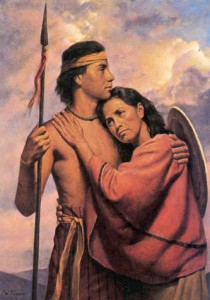 Another part of the Book of Mormon that gains a new perspective is the story of Helaman and his 2,000 Stripling Soldiers (the phrase “Stripling Warriors” does not exist in the Book of Mormon). The story is found in Alma 53:8-23 and Alma 56-57. These 2,000 Stripling Soldiers are in two major engagements: one in Alma 56 and one in Alma 57. In both engagements, not a single one of the 2,000 Stripling Soldiers dies. In the second engagement, 200 of them are badly wounded, but none of them die (Alma 56:56; 57:24). In contrast, while fighting along side the Stripling Warriors in the first engagement, Antipus and many of his officers (Mormon uses the term leaders, but I will use officers to describe the class of warriors who direct a battle and make strategy) die, and 1,000 men die in the second engagement (Alma 56:51; 57:26).
Another part of the Book of Mormon that gains a new perspective is the story of Helaman and his 2,000 Stripling Soldiers (the phrase “Stripling Warriors” does not exist in the Book of Mormon). The story is found in Alma 53:8-23 and Alma 56-57. These 2,000 Stripling Soldiers are in two major engagements: one in Alma 56 and one in Alma 57. In both engagements, not a single one of the 2,000 Stripling Soldiers dies. In the second engagement, 200 of them are badly wounded, but none of them die (Alma 56:56; 57:24). In contrast, while fighting along side the Stripling Warriors in the first engagement, Antipus and many of his officers (Mormon uses the term leaders, but I will use officers to describe the class of warriors who direct a battle and make strategy) die, and 1,000 men die in the second engagement (Alma 56:51; 57:26).
While in Baghdad, I witnessed a modern day version of this story on a much smaller scale. It started one night when the base was hit by 120 milometer Katyusha rockets. A giant voice alerted us: “INCOMING! INCOMING! INCOMING!” You could feel the ground bump and the shock wave with every rocket. It was my first indirect fire incident and pretty scary. At this same time, a pickup truck was driving on the base complex from one place to another inside the wire where it’s “safe.” According to a witness who arrived on the scene shortly after the attack, the truck was a four door “mini-truck” with a person in the front seat and two people in the back seat; the front passenger seat was empty. At a stop sign a rocket landed in the truck-bed. The witness told me the rocket left a big hole in the ground under the truck, ripped the rear-differential apart, and killed the two people in the back seat. One of the dead was a young mother of three (it is possible that my memory fails me and she only had two young children). The driver lived. He was gravely injured – just like many of the Stripling Soldiers – but he made it. He made it because the two people in the back seat absorbed the blast. They died and he lived.
This is just like the Stripling Warriors. They survive the first engagement because Antipus and his men absorb the blast. Same for the second engagement where 1,000 men die. However, I never hear anyone in church praise Antipus and his men for their sacrifice. I’ve also never heard anyone mourn the loss of the 1,000 men who died absorbing the blast from the Lamanites in the second engagement. In that second engagement, the rest of the army’s casualties equaled 50 percent of the Stripling Soldier’s total end strength. 50 percent! (The Stripling Warriors must have been a small percentage of the Nephite army because the number of casualties the army suffered compared to the Stripling Soldier’s end strength and when they are reinforced in Alma 57:6, they get three times the number of Stripling Soldiers and it is not described as a massive increase in their numbers.)
In the first engagement, many of the officers die. That means many of their “enlisted” men would likely have died first because by the time the officers start dying in large numbers your lines have broken; you protect your leadership so they can direct the battle. I know officers die in battle without the lines breaking; however, Antipus appears to be the equivalent of a general officer who would not be risked because of his value as a strategist. It also says that so many of them died that it caused confusion. This was a devastating and bloody loss for the Nephites, but no one remembers what they did to save those 2,000 boys.
Speaking of leadership directing the battle, Helaman says his 2,000 soldiers obeyed him with “exactness” in the second engagement, and he attributes this to their survival (Alma 57:21). We will never know what Helaman left out when he wrote Moroni, but I suspect, based on the high casualty rate amongst the other men fighting along side the Stripling Soldiers, that the leadership was maneuvering those young men to keep them alive. This doesn’t mean they didn’t fight well as Helaman claims, but as a small percentage of the total Nephite army end strength, they could have easily been kept where the Lamanites were the weakest. In this way, Helaman and the others were placing them in the “front seat” with human shields behind them absorbing the blast. Of course they survived by obeying Helaman with exactness – he kept them out of the worst of it.
Now, I could be wrong. Perhaps Helaman ordered those men into the center of the battle in the second engagement even though they were a minority of the army, and God only saved those young soldiers while leaving Antipus, his officers and the other men to die in mass. But what kind of God does that? More likely, Helaman maneuvered his men in a way, and the other leaders maneuvered their men in a way, that kept the boys alive. Why else would Helaman make such a big deal of his young soldiers doing what soldiers do – obey orders with “exactness”? Later when Helaman writes to Moroni, another general officer who will quickly recognize what happened, he shifts the focus from how he sacrificed 1,000 other men to save his boys to divine intervention.
Every culture on Earth celebrates those who die to save another’s life. Why don’t we do the same when we retell this story? Why don’t we celebrate Antipus and his men? Why don’t we celebrate the 1,000 men who died in the second engagement? Because of their sacrifice, those boys went home to their families. It’s just like the person in the front seat of the truck who went home to his family because two people in the back seat did not go home to theirs. This kind of thing happens all the time in war, only no one is inhuman enough to say God saved the person in the front seat for being more righteous than the mother of three young children who died in the back seat.

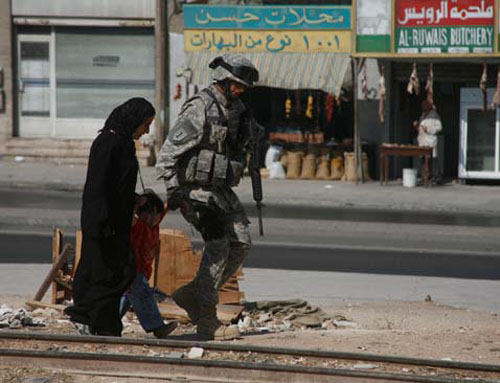
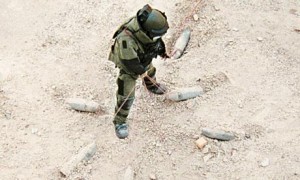
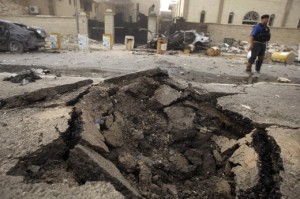
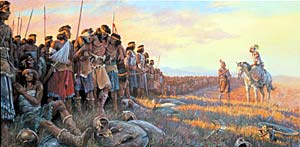
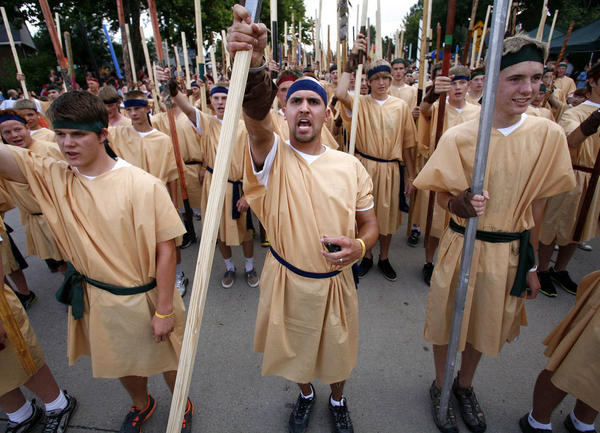



So very powerful. Thank you for visiting these memories Atticus; I know it cannot have been easy. I think your reading of these passages makes a great deal of sense.
When we read the war chapters in the Book of Mormon we need to remember what Gen Forest said “war means fighting and fighting means killing.” A real miracle would be if I came home and said to my wife “I’ll never have to go to another war again because they’re over for good; we’re done killing each other”
-Atticus
Wow! I’m so grateful for Atticus for sharing this perspective. I wonder how this has never been brought up before in discussions of these passages.
It makes sense that the Nephites recognized the sacrifice of the young men who joined the Stripling Warriors group, as well as the sacrifice of their families by upholding the covenant they had made to not take up weapons of war. What an amazing sacrifice of the other Nephite soldiers and their officers to protect and honor the willingness of these young men to go untrained to battle.
I really wish we could incorporate this perspective into the way we taught these stories in Church. It is so much more mature, respectful, humbling, and realistic than the idolization of the miracle soldier boys.
I think of all the hoopla that is made over these celebrated soldiers. I was going to create a slideshow of every trinket, book, song that was labeled Stripling Soldier. Everything from momma’s boys shirts, pocket knives, hats, parades, songs to mother day talks we hear EVERY year.
-Paul
Wow, I am speechless. Thank you.
Is there a reason we can’t just highlight the great and honorable sacrifice of Antipus and his men without denigrating Helaman and his men?
Josh, could you explain why you feel this is denigrating towards helaman and the stripling warriors? I think it is a needed perspective on what is happening that we normally dont discuss. Atticus is offering us his real life experience and using that to put this story into context for us. Due to his life experiences Atticus is helping us to see a different side of the story that very few of us have ever considered. It is not denigrating to think outside the box and dig a little deeper into how all those young men might have survived the battles with no casualties
That is a fair criticism. But how do you propose I place more praise on Antipus and his men without making Helaman and his soldiers look worse? To observe is to compare. We observe the valor of what someone does by explicitly and implicitly comparing their actions to what others do. If I change the comparison between Antipus and the other Nephite soldiers, and Helaman and his soldiers, it will make the latter look worse because the comparison has changed. When I point out how they may have been used in a way that protects them, the fault is not only with me for pointing it out, but with the text that allows this interpretation. If I made an error with my analysis of the text, please show me.
-Atticus
Josh and Atticus,
I don’t think it is a matter of making one group look bad or to place either of the groups above the other. Don’t both groups show attributes of Christ that we too would like to achieve? Those of obedience and sacrifice? Faith and love?
The lessons focus on the faith of the mothers because it is the faith of the mothers that TAUGHT their sons OBEDIENCE. I don’t believe it was faith as in “OH I believe that they won’t die” rather the mothers’ faith in God. Because of THEIR faith they taught obedience…in exactness, to return to live with their Father in Heaven. Would the 2000 have been obedient with exactness if they were not taught by their faithful mothers? (Yes, I’m sure their fathers too 🙂
Unfortunately we don’t find many who discuss the very important principle of sacrifice that is also shown in this story, by Antipus and his men. Or the love they had for these 2000 to lay down their lives for them.
What Atticus has given us in his article is enlightenment of scripture. It is now our responsibility to pray for a better understanding and, in turn, share this enlightenment with others or when we hear this lesson being taught.
We can learn from both sides of this story. We learn of faith and obedience but also of love and sacrifice.
Atticus,
Thank you for your living example of service and sacrifice. May God bless you and keep you that you too may return to your family.
Atticus,
I don’t think it’s a significant challenge to praise Antipus and his men without making Helaman and his men look worse. You could simply say something along the lines of “You know it’s a shame that we forget to honor some of the unsung heroes in the wars like Antipus and his men who gave their lives to help Helaman and his warriors when they were being pursued.” It can be done without having to speculate as to how the war was prosecuted.
I think the thing that bothered me most was when you said “Later when Helaman writes to Moroni, another general officer who will quickly recognize what happened, he shifts the focus from how he sacrificed 1,000 other men to save his boys to divine intervention.” First off, you’re assuming that Helaman’s actions somehow caused the deaths of Antipus and that he did it in such a calculating way to save his own men that he has to “shift [Moroni’s] focus” off that fact and distract him by attributing it to divine intervention. That seems not only speculative, but denigrating of Helaman’s motives and character.
It could very well be that that isn’t the message you meant to convey, but that sentence in particular came across as slanderous.
I believe I make it clear when I’m talking about the first engagement the stripling soldiers are with Antipus and the second engagement where 1,000 Nephites die. If I didn’t, that’s my mistake. It is the second engagement where I believe the text lends to the possibility — and I think likelihood — that they maneuvered the armies to protect the stripling/young soldiers. I would expect nothing less. I must also admit to a bias: I don’t believe God is on the battlefield then or now. The BoM speaks of him helping a particular side win or lose, but which individuals live or die on a particular side, well, I don’t think he does that. Lots of good men die, and lots of bad men live.
-Atticus
Yeah, I meant the 1,000, but I wrote Antipus on accident. I noticed it as soon as I hit submit. But my point still stands that your statement ascribes repulsive motives to Helaman (that you may not have intended). I imagine your professed bias inclines you to look for an explanation outside the supernatural and that may be why we differ in our views on this point.
I believe God is capable of sparing the 2,060 without needing to spare others and there could be any number of explanations for it without impugning the character of those who died. Their death doesn’t imply that they were any less righteous than the stripling warriors. Perhaps their role had been played in this life. Maybe the miraculous survival of the 2,060 was providential because people needed to be reminded, both in Helaman’s day and our own, that miracles do happen. Maybe the fact that the people of Ammon were living a higher law entitled their parents to unusual blessings. Maybe they were kept out of harm’s way by their commanders as you suggest. There are probably dozens of other possible explanations. I don’t know which is correct. All I know is what was recorded by the prophet-recorders who, while human, have given me no reason to doubt their honesty in the record. So I think it may just be that we have different views of how God might or might not intervene.
Thank you for your post.
Josh Richardson,
I agree. I was thinking along these lines as I read the comments. You said it better than I would have.
Loved this. Thanks. Shared it with my husband who is a veteran (was in war zones but no personal combat) and a police officer. He loved it too.
I won’t read the story of the Stripling Warriors the same now.
Thanks Atticus.
Mel,
OK, an update on my previous comments. I went and read the chapter, and not to downplay anything that Antipus and his men did but there is quite a bit more here than Antipus and his men taking the front lines so that the 2000 didn’t have to fight.
I can do the verse and chapter break down if requested but here is what I gather from reading:
– Antipus and his men were losing, the 2000 came along and the Lamanites freaked out seeing fortifications and backed off.
– Heleman said they would have been slain but prayed that the Lamanites not come against them and their prayers were answered.
– 2000 more MEN came and they had an army of 10,000 and the Lamanites freaked out again and didn’t come to battle.
– Antipus and Heleman decided to force the hand of the Lamanites and Antipus suggested using the small army of 2000 as “bait” to get Lamanites to follow and Antipus and his men would come up from behind, this worked.
– Heleman and the 2000 didn’t see the Lamanites pursuing and went back to see if Antipus had caught up and found Antipus and his army falling so they fought, overcoming the Lamanites and giving further strength to Antipus’ army
This goes on to talk about prisoners of war etc.
Then, it specifically talks about their obedience to an exactness and how they were in the “thick” of it.
I am not down playing the fighting and sacrificing of Antipus but I think that to say that it is “hoopla” over the 2000 and that they were “momma’s boys” is quite a statement demonstrating a misunderstanding of the significance of their faith and obedience.
Imagine being SO in-tune with the Spirit and obedient that you would follow the Spirit telling you to swing left, duck right, etc. How many people do you know that can or will be that obedient? I say when you find people that were that obedient, they deserve the “hoopla”.
Now, that being said….Antipus and his army also deserve “hoopla”. Their sacrifice and fighting was just as courageous and valiant as anyone. They all fought for the freedom of their people.
Atticus (one of my very favorite book/movie characters, too), I appreciate so much your insight on this aspect of the Book of Mormon. I have always been bothered when I heard people teach “the 2000 strippling warriors were taught to be good and their lives were saved because of” 1. their faith 2. their faith in what their mothers taught them and/or 3. the faith of their mothers.
When our son joined the Army 82nd Airborne in 2007, I felt like I was in quicksand. I begged, prayed, promised God that I would do ANYTHING if my son could come back home “whole”-at least in his heart and soul. Josh, our son, was one of the fortunate ones- he was only deployed to Haiti. My husband said that I prayed him “out” of going to Afganistan and Iraq.I don’t know that my husband was correct but I do think God knew I would not survive if Josh didn’t come home with his heart and soul intact. For Josh, there appears to be some shame and guilt that he was never deployed. However, for the most part, he came home with his heart and soul intact and functional.
Thank-you Atticus for your service and sacrifice. I cannot thank you enough! I am grateful that it appears in this article that your “heart and soul” are functional. There are no words to express my gratitude for this. I am looking forward to sharing your perspective with the children in Primary. I look forward to the day that we can all decide to be true followers of Christ (Mohammed, Buddha-whatever name we have for deity) and refuse to go to kill each other.
I loved the points the author made about how Antipus’s army deserves to be remembered. It’s true that they made sacrifices that were key to the nations survival, just like in the story of the two people in the back seat. I will confess that I have some of the same reservations mentioned by other commenters. In particular, the original post says,
The thing is, that’s exactly what Helaman says God did. If this prophet is inspired to say that a group of soldiers was saved through divine intervention, even though other good people died, I assume (1) it’s true, and (2) whatever God’s reasons for doing it, they are good reasons. What kind of God does that? A good God, whose reasoning I may not yet understand.
Like Josh says above, there are many possible reasons why God might preserve one and let another die, even though they were both righteous and deserving of blessings. If his reasons aren’t immediately apparent, I think the solution is to keep trying to discern the Lord’s will. I don’t think the solution is to dismiss a prophet’s clear statement that the preservation was due “to the miraculous power of God, because of their exceeding faith” (Hel. 57:26), and instead conclude that it was just the result of skillful planning (see Alma 44:9, although that’s a case of comparing good with bad).
Perhaps maneuvers had something to do with it (that was a great insight in the article). But I don’t think we should assume that God would never directly intervene with two righteous people such that one lives and the other dies.
Helaman never impugns the worthiness of Antipus’s men; he never says that God’s reason for letting them die was because they were less righteous (if someone said that in Sunday school, I’d probably speak up). And even if he had, he never says, “And therefore, you can conclude the same thing about every other similar situation on this mortal earth.”
I think part of the problem is when we assume that miraculous preservation is solely conditioned on personal righteousness and effort. It’s not. It’s also conditioned on God’s will and purposes. It’s very possible that God had specific reasons for preserving one (such as serving as a highly visible sign of his power over human events, which could motivate people to repent and trust in his power over other aspects of life, such as salvation from sin). So even if one person is righteous enough to merit the Lord’s protection, it doesn’t mean the unprotected person was unrighteous. Neal A. Maxwell says there are at least two other possibilities:
Bottom line? Great thoughts about our need to notice some of the less-remembered heroic deeds. I just think it’s fully possible to do that without doubting Helaman and Mormon’s prophetic interpretation of God’s involvement in human events.
OK, now that things have calmed down, let me submit my opinion on the matter; I shared this in my Sunday School class and it went over like a ton of bricks.
What I see Helaman trying to do is dealing with what theologians call theodicy. That is, if God is all good and all knowing, why do bad things happen to good people? Mormons, in general, look to agency to answer the question. Helaman does something different. He sees the death of the good Nephites as justified because it allowed God to keep his promise – to save Helaman’s warriors. Although in his letter he does mention the many Anti-Nephi-Lehi warriors that were injured, it is down-played for God had preserved them. It begs the question though, if I am nearly mortaly injured, is that actually better than being killed? In Helaman’s mind, that doesn’t seem to matter because the warrior’s lives were saved; God kept His promise.
The other part that bothers me with the story is that things seem to be a bit of numbers game for Helaman. I would expect this from Captain Moroni who was a life-time militiary man, but not from Helaman. There is no indication within the extant text that Helaman was anything more than a prophet; nothing points to the idea of him being a life-time military man. Part of Helaman’s argument that his soldiers were divinely protected, is contingent upon (to paraphrase) “more of them were killed than us”. Using this logic as proof that God is on our side is problematic; as I said it minimizes things to just a numbers game.
Thirdly, we have to remember that it was not only the Anti-Nephi-Lehi mothers that sent their boys out to war; the Lamanite mothers did so too. And the Lamanite mothers lost sons in the battles. War is horrible. People die.
To celebrate war, to minimize the sancitity of life is wrong. But also, to not acknowledge that life is merely a coma in our eternal progression is wrong. These things are necessarily held in tension.
A close reading of the text seems to indicate that the Lamanites were almost always hesitant to go to battle with the Nephites. It was only after being worked up by some apostate Nephite group that they would go into battle. It makes me wonder if the Lamanites were really as evil as they are made out to be by the Nephite record keepers?
Lastly, the question must be asked, why did Mormon use this primary document (Helaman’s letter) in his text? One of Mormon’s chief modes of history telling is to show the fulfillment of prophecy and he does this while staying true to history; regardless of the logical problems of Helaman’s conclusion, Mormon feels obligated to tell it as Helaman saw things unfolding. In Helaman’s letter we see Mormon’s faithfulness to history while, at the same time, showing the reliablity of prophecy. It was prophesied that Helaman’s warriors would be preserved and they were. If prophecy is shown to be reliable, we can then rely on prophecy that is yet to be fulfilled.